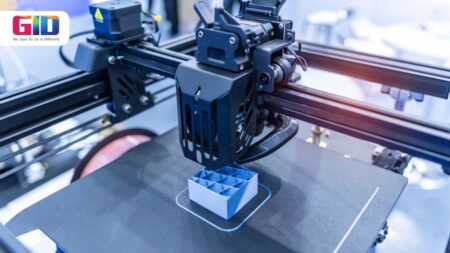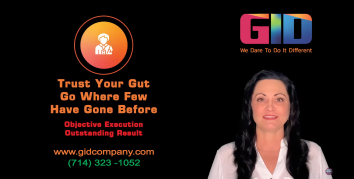In this blog, we are about to discuss a lot of interesting stuff regarding new product development and new product development strategy, so stay tuned and keep reading. Let’s get started.
So, What’s a New Product Development Strategy?
A new product development strategy is a comprehensive approach designed to successfully launch a new product into an existing or new market. This strategy involves continuous market research, rigorous testing, and meticulous planning of product concepts. It also encompasses strategies for introducing existing products to new markets. Additionally, a new product development strategy may be crucial for existing products within their current market, especially when adding new features, undergoing rebranding, or launching a new complementary product line. By following a well-defined product development strategy, businesses can effectively navigate the complexities of market introduction and product evolution.
As per the product life cycle theory, all products eventually reach a plateau where revenue growth diminishes. This is typically when companies adopt fresh product-led growth strategies, introduce new product lines, or implement a new marketing strategy. Some companies concentrate on new product development strategies to help augment the growth of their current products. Regardless of whether a company’s product is successful or not, a new product development strategy can be employed to enhance growth.
A new product development strategy typically complements a business strategy, and the product development process can vary depending on factors such as commercializing a new product, iterating on an existing one, or other considerations. Extensive market research through focus groups is typically conducted to determine the functionality of the product and gain insight into the needs of customers in different demographics and target markets. The development team can then use this data to brainstorm and formulate a suitable strategy.
Read Also: Streamline Success with Professional NPD Product Services
Let’s Understand New Product Development Strategy Process (NPD Process)
The process of new product development (NPD process) can be condensed into eight key steps, which remain consistent for start-ups, SMEs, and enterprises alike. These steps are fundamental to the success of the product life cycle, and all development projects must undergo them.
New Product Development Strategy: Ideation Process
The first stage in our product development strategy is idea generation, which involves systematically brainstorming innovative product concepts based on real-world problems, existing market solutions, and initial target audience research. Generating a few strong ideas requires producing a large volume of ideas first. This process can utilize two key sources: internal and external. Internal sources include company stakeholders and employees, such as R&D teams, product managers, and marketers. External sources encompass outside stakeholders, suppliers, competitors, and other secondary inspirations. Employing these diverse sources ensures a comprehensive and effective product development strategy for generating and refining ideas.
Refining the Best Ideas in Your New Product Development Strategy
Idea screening is a crucial part of the product development strategy, focusing on filtering and selecting the best ideas from a pool of generated concepts. The objective is to identify specific types of ideas and choose the most promising one, as integrating new ideas after the product development process begins can lead to delays and complications. In choosing ideas, consider both profitability for the company and utility for the end-user. For those looking to master an effective product development strategy, our product management certifications offer comprehensive guidance on developing a robust and successful product strategy.
When selecting ideas, two factors should be considered: profitability and utility. Profitability pertains to the company, whereas utility concerns the end-user. For those interested in acquiring skills for creating an excellent product strategy, our product management certifications provide guidance on achieving this.
New Product Development Strategy: Concept Creation and Testing
Once an idea is selected, the next phase involves developing it into a detailed product concept. This product concept represents an advanced iteration of the initial idea and may involve creating multiple concepts for different ideas. This process is resource-intensive and time-consuming. To ensure the product concept’s effectiveness, it must undergo rigorous testing within the current market. Testing is crucial for refining the product concept, providing insights into consumer response, appeal, and reliability. Engaging with target audience segments during this phase allows for precise feedback, which aids in optimizing product design, pricing, and prototyping. A well-executed product development strategy ensures that the concept aligns with market needs and expectations.
Formulate a New Product Development Strategy
After finalizing and testing a comprehensive product concept, the subsequent step is to establish a robust product development strategy. This strategy is crucial for successfully bringing your product to market and involves crafting a detailed plan to effectively position and promote the product. By devising a well-thought-out product development strategy, you can ensure that every aspect of the product’s journey—from development to market launch—is carefully planned and executed. A strong product development strategy not only highlights the product’s unique features but also identifies target audiences, channels, and tactics to maximize its market impact and success.
This strategy should be developed with the current market, market share, and target audience in mind. The marketing strategy typically consists of several key components, which may include:
- Value proposition
- Target market description
- Profit and market share goals (focus on SMART goals)
- Pricing outline
- Marketing and distribution budget
- Long-term profit goals, sales, and marketing mix.
The marketing strategy also allows you to track certain metrics.
Business Potential of Proposed Product
After the marketing strategy, it’s important to evaluate and analyze the effectiveness of the new proposed product. That includes viewing future projections, costs, and more.
To conduct this research, you can either go for market surveys or look at similar products by other companies. Developing a sales forecast will help you estimate costs, profits, and a timeline.
Product Development
Once the business analysis is complete, the product development process begins. Up until this point, your product was just a rough idea, prototype, or a potential product. This step is crucial in turning it into a fully functional product.
This stage often requires a significant investment, as you’ll be spending on research and development. The R&D department typically creates multiple versions of the product during this phase, which is called prototyping, and can take several months to complete.
Once you have a product prototype ready, it’s time to test it. Marketers usually bring in customers for product testing, which helps them get an idea of what the customer wants.
Marketing Testing
When your product is ready to launch, the next step is to conduct test marketing, which involves testing out marketing strategies in realistic market settings. This phase is essential for marketers to understand how the product is perceived, what needs to be improved, and what other investments the company can make to ensure the product’s success. The duration of marketing testing can vary depending on the product, but it’s crucial to be as thorough as possible and follow testing best practices.
Commercialization
The last step in the product development process involves making the decision to launch the product. By this point, you have a fully functional product, a marketing strategy, and all the necessary information to make it work.
Launching the product involves introducing it to the market and promoting it through marketing and sales. It’s crucial to carefully plan the timing and location of the product launch to ensure its success. Failure to do so may result in the product’s failure despite its potential.
We Can Help You Create a Great New Product Development Strategy
The success of your new product relies heavily on your new product development strategy, as the latter is a prerequisite for the former. It is also essential for product managers, product marketing managers, the product team, and the marketing team to effectively perform their respective roles. At GID Company, we have a team of strategists to help pen down the best new product development strategy that ensures the success. The New Product Development Strategy defined with the help of experts at GID Company will help you maintain consistency and thoroughness.
You can also like our Facebook page and follow us on Instagram.
You May Also Like:

















